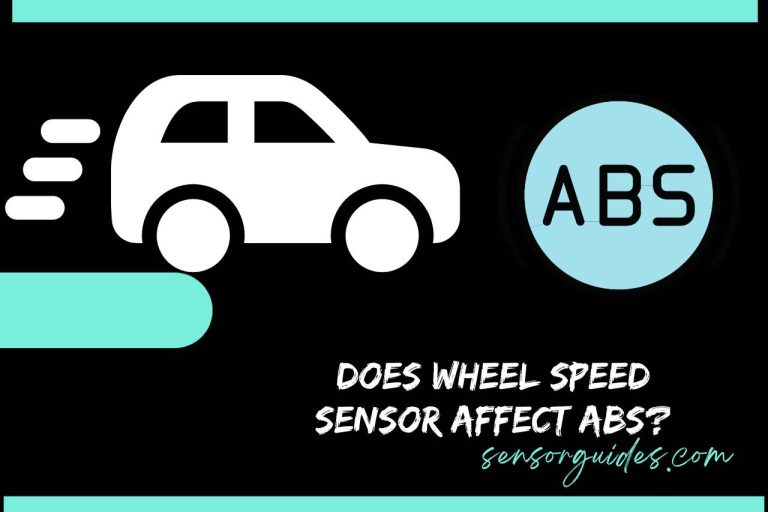Under the Hood: Navigating the World of Readings at Idle PSI for Car Enthusiasts! – 2023
Introduction
Unveiling the Significance of Map Sensor Readings
In the problematic world of car engineering, map sensor readings play a crucial function in ensuring superior engine performance and fuel performance. These readings offer treasured insights into the manifold absolute pressure (MAP), a key parameter that affects air consumption and combustion. By constantly monitoring MAP, engine manipulate gadgets (ECUs) can make unique adjustments to gas injection and ignition timing, optimizing engine operation under various conditions.
Map sensor readings turn out to be particularly giant throughout idle conditions, while the engine isn’t always actively generating electricity. At idle, retaining a stable MAP is essential for easy idle operation, preventing stalling and making sure a comfortable driving experience. Moreover, accurate MAP readings at idle make a contribution to reduced emissions and stepped forward gasoline economy.

Understanding the Impact of Idle PSI on Engine Performance
Idle PSI, or idle manifold stress, refers back to the stress of the air in the engine’s consumption manifold when the engine isn’t always generating power. Maintaining proper idle PSI is crucial for several reasons:
- Stable Idle Operation: Idle PSI affects the idle speed, the RPM at which the engine runs whilst now not below load. Maintaining a constant idle PSI ensures easy and solid idle operation, stopping the engine from stalling or surging.
- Reduced Emissions: Idle PSI contributes to lower emissions stages. When idle PSI is simply too excessive, excessive fuel is injected, main to incomplete combustion and multiplied emissions. Conversely, if idle PSI is just too low, the engine may also stall, also causing higher emissions.
- Improved Fuel Economy: Idle PSI indirectly influences gas financial system. Stable idle operation and decreased emissions make contributions to usual gas performance.

The Basics of Map Sensors – Readings at Idle PSI
Defining Map Sensors
Map sensors, additionally called manifold absolute pressure (MAP) sensors, are critical components in cutting-edge engine control structures. They constantly measure the pressure of the air in the engine’s consumption manifold. This records is then relayed to the engine control unit (ECU), which makes use of it to optimize gas injection and ignition timing.
How Map Sensors Work
Readings at Idle PSI : Map sensors normally appoint both a piezoelectric or piezoresistive principle to detect adjustments in manifold pressure. Piezoelectric sensors generate an electrical signal proportional to the pressure carried out, even as piezoresistive sensors adjust their electrical resistance primarily based on the carried out strain.
Importance in Modern Engine Management Systems
Map sensors play a crucial function in modern-day engine management structures with the aid of presenting actual-time comments on manifold pressure. This remarks enables the ECU to make unique modifications to fuel injection and ignition timing, ensuring gold standard engine performance underneath various load conditions.
Idle PSI: Decoding the Terminology
Dissecting Idle PSI
Idle PSI, or idle manifold strain, is the unique MAP sensor studying when the engine is idling. It represents the strain of the air inside the consumption manifold while the engine isn’t actively producing strength.
Role in Engine Stability
Idle PSI plays a crucial part in retaining engine stability at idle. By maintaining idle PSI within a precise variety, the ECU can adjust the idle pace and save you the engine from stalling or surging. This ensures a easy and regular idle operation.
Significance of Accurate Readings
Impact on Fuel Efficiency
Accurate MAP sensor readings are critical for attaining foremost fuel efficiency. By imparting unique records on manifold strain, the ECU can precisely manage gasoline injection, making sure that most effective the necessary quantity of gasoline is introduced to the engine. This facilitates prevent over fueling, which results in extended gas consumption and wasted energy.
Accurate MAP sensor readings also make contributions to fuel efficiency via permitting the ECU to optimize ignition timing. When ignition timing is nicely aligned with the engine’s working conditions, combustion is extra green, ensuing in better gasoline economic system.
Ensuring Optimal Engine Performance
Accurate MAP sensor readings are essential for preserving greatest engine performance across a huge variety of operating conditions. By constantly monitoring manifold stress, the ECU can make actual-time adjustments to gasoline injection and ignition timing, making sure that the engine is running at its peak performance.
Accurate MAP sensor readings additionally play a role in stopping engine damage. When MAP readings are peculiar, the ECU can also stumble on ability issues and take corrective actions to protect the engine. For example, if MAP readings imply excessive pressure, the ECU can also lessen gasoline injection to prevent detonation.
Common Misconceptions about Map Sensor Readings
Dispelling Myths
Several misconceptions surround MAP sensor readings and their interpretation. Here are some commonplace myths and their corresponding truths:
- Myth: MAP sensor readings without delay reflect engine energy output.
- Truth: MAP sensor readings indicate manifold strain, not engine electricity output. While there is a correlation between MAP and power, it is now not an instantaneous one.
- Myth: Higher MAP readings always indicate better engine overall performance.
- Truth: Optimal MAP readings range depending on engine situations and operating parameters. Higher MAP readings may not continually translate to higher performance.
Addressing Common Misunderstandings
To keep away from misinterpreting MAP sensor readings, it’s important to recognize that they’re simply one piece of the puzzle in determining engine performance. Other elements, together with engine temperature, air-gas ratio, and ignition timing, also play large roles.
When reading MAP sensor readings, it’s crucial to don’t forget the context, inclusive of engine RPM, load conditions, and environmental factors. Comparing MAP readings against manufacturer specs or reference values can provide valuable insights.
Factors Influencing Map Sensor Readings at Idle PSI
Environmental Conditions
Environmental situations, mainly atmospheric pressure, drastically impact MAP sensor readings at idle PSI. As atmospheric pressure increases, MAP readings may also growth. Conversely, as atmospheric pressure decreases, MAP readings will even decline. Understanding the outcomes of atmospheric stress on MAP readings is crucial for accurate diagnosis and troubleshooting. When comparing MAP readings throughout extraordinary locations or elevations, it’s crucial to account for variations in atmospheric stress.
Engine Temperature Variations
Engine temperature also impacts MAP sensor readings at idle PSI. As the engine warms up, intake manifold strain tends to lower due to thermal expansion and improved air quantity. Conversely, because the engine cools down, consumption manifold strain may additionally boom slightly.
Understanding the relationship among engine temperature and MAP readings is critical for technicians and car lovers. Observing how MAP readings trade with engine temperature versions can offer valuable diagnostic data.
Understanding Altitude Effects
Altitude notably influences MAP sensor readings at idle PSI due to changes in atmospheric pressure. At better altitudes, atmospheric strain decreases, leading to lower MAP readings. Conversely, at lower altitudes, atmospheric pressure will increase, ensuing in better MAP readings.
Understanding the results of altitude on MAP readings is important for correct engine operation in mountainous regions. Technicians and drivers need to be conscious that MAP readings can also vary relying on altitude and make adjustments thus.
Diagnostic Tools for Map Sensor Readings
Importance of Regular Monitoring
Regular monitoring of MAP sensor readings is important for preserving highest quality engine performance and preventing capability problems. By keeping an eye on MAP sensor readings, technicians and car owners can pick out early signs and symptoms of sensor malfunction and take corrective moves earlier than they lead to extra large issues.
Monitoring MAP sensor readings is mainly critical at some stage in ordinary preservation inspections, in addition to while troubleshooting engine performance problems. Observing how MAP sensor readings change below specific conditions, including varying engine RPM and load, can offer precious diagnostic insights.
Troubleshooting Map Sensor Issues
Identifying Irregularities
The first step in troubleshooting MAP sensor issues is to discover irregularities in sensor readings. This may be performed by using evaluating MAP sensor readings to manufacturer specifications or reference values. Deviations from anticipated values may additionally suggest a trouble with the sensor or its associated circuitry. Common irregularities in MAP sensor readings include:
- Constant or unchanging readings: MAP sensor readings have to range with adjustments in engine RPM and cargo. Constant readings may additionally imply a sensor fault or a hassle with the signal route.
- Unusually excessive or low readings: MAP sensor readings need to fall within a specific variety. Excessively high or low readings may additionally imply a sensor malfunction or an problem with engine vacuum or intake manifold pressure.
- Erratic or fluctuating readings: MAP sensor readings ought to be clean and regular. Erratic or fluctuating readings can also advise a hassle with the sensor’s electric connections or the sign processing in the ECU.
Step-by way of-Step Troubleshooting Guide
Visual Inspection: Begin by means of examining the MAP sensor and its connector for any signs of bodily harm, corrosion, or unfastened connections. Ensure the sensor is properly established and the vacuum hose is in top circumstance.
Electrical Checks: Use a multimeter to check the voltage, present day, and resistance of the MAP sensor circuit. Compare the measured values to the manufacturer’s specs. Abnormal readings may additionally indicate a hassle with the wiring, connectors, or sensor itself.
Signal Analysis: Connect an oscilloscope to the MAP sensor signal cord to have a look at the waveform. Check for any abnormalities, which includes noise, spikes, or sign drops. A distorted or irregular waveform might also suggest a problem with the sensor or its sign processing.
Scan Tool Diagnostics: Utilize a scan device to display MAP sensor readings in actual-time. Observe how the readings trade beneath unique engine situations. Compare the readings to the vehicle’s particular running parameters.
Sensor Replacement: If the troubleshooting steps imply a faulty MAP sensor, substitute is important. Use the producer’s recommended substitute part and comply with the suitable installation strategies.
ECU Evaluation: If the issue persists after replacing the MAP sensor, the ECU can be the purpose. Specialized ECU diagnostics may be required to pick out and clear up any underlying issues.
Conclusion
Map sensor readings play a crucial position in making sure premier engine performance, gasoline efficiency, and emissions manage. By appropriately measuring manifold pressure, MAP sensors provide precious statistics that lets in engine manipulate devices (ECUs) to make precise adjustments to fuel injection and ignition timing. This ensures that the engine operates correctly beneath a wide range of situations, maximizing strength output even as minimizing fuel intake and emissions.
Maintaining correct MAP sensor readings is critical for correct engine health and toughness. Regular monitoring of MAP sensor readings can assist discover early symptoms of sensor malfunction, bearing in mind well timed corrective movements to save you ability issues.
FAQs
What is idle PSI?
Idle PSI, or idle manifold strain, is the stress of the air within the engine’s consumption manifold while the engine is not generating power. It is typically measured in kilos in step with square inch (PSI) or kilopascals (kPa).
What is a everyday idle PSI range?
An ordinary idle PSI variety for a fuel engine is normally between 15 and 25 PSI (100 to one hundred seventy kPa). However, this could range relying at the make and model of your car.
What are the signs and symptoms of an odd idle PSI?
Signs of an ordinary idle PSI can encompass:
- Rough idle or stalling
- Hesitation or surging at some point of acceleration
- Reduced engine electricity
- Increased gasoline intake
- Illuminated Check Engine Light (CEL)





